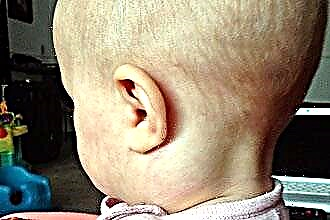During pregnancy, a number of physiological changes occur in the heart of the fetus, which are necessary for blood circulation in the womb without the participation of the lungs. Anatomical adaptation to such conditions is considered to be an oval "window" between the atria and the Eustachian valve in the inferior vena cava. Over time, such formations are closed. If a child has a part of the valve, they speak of the presence of a small developmental anomaly, which in adulthood can cause circulatory disorders. To identify pathology, you should contact a pediatric cardiologist.
What is it and where is it located?
Currently, the question of which small anomalies in the development of the cardiovascular system is considered a pathology has not been fully resolved, and which are age-related anatomical and physiological features of the child's body. The only exception is the presence of anatomical abnormalities of the heart in adults.
The blood flow in the womb has significant differences. During the first four weeks of development, the basic laying of the structures of the heart occurs. Muscle heart tissue (myocardium) and connective tissue are formed - the frame of the main coronary vessels, arteries and veins. Until the moment of birth, the lungs do not participate in the process of saturating a small organism with oxygen and removing carbon dioxide. This role is played by the placental circulation through the delivery of oxygenated blood through the umbilical vessels.
The Eustachian valve (EK) is a valve in the lumen of the inferior vena cava, which is necessary for blood circulation in the fetus (directing blood from the right atrium to the left through the open foramen ovale). The location of the EK is shown in the photo below:
Due to these communications, the delivery and outflow of blood is carried out in the amount necessary for a small organism. After childbirth and removal of the placenta, the vascular pathways change. With the first cry of a child at birth, the lungs expand and, under increased intracardiac pressure, the fetal openings in the heart begin to close. If a fold of endocardial tissue (inner membrane) is preserved in an adult, they speak of an elongated Eustachian valve.
Extended eustachian flap
The Eustachian valve in the heart is defined at the level of the arch of the inferior vena cava, along its anterior surface. On average, after birth and the child reaches the age of 5-7 years, its size does not exceed 10 millimeters, or the connective tissue structure is completely absent. Anatomically it is:
- endocardial fold in the form of a semilunar valve;
- length from 0.2 to 1.0 centimeters;
- an elongated filamentous formation extending from the axis of the inferior vena cava to the middle of the atrial wall and septum;
- a movable flap that freely floats in the bloodstream;
- on ultrasound is determined in the area of the lower axis of the vein;
- at large sizes it can reach the region of the tricuspid valve and partially protrude into the cavity of the right ventricle.
What is the danger of having a damper in adults?
All minor anomalies in the development of the cardiovascular system do not cause significant hemodynamic (blood circulation) disorders. An increase in the frequency of detection of such a pathology is associated with the spread of ultrasound diagnostics for children and adults, which makes it possible to identify a deviation in the early stages.
According to the latest research in cardiology and general therapy, lengthening of the Eustachian valve by more than 1 centimeter is determined in 0.25% -0.50% of the population. In most cases, this happens against the background of a state of complete health.
The presence of such a valve increases the risk of developing some complications, since the main source of electrical impulses of cardiac contractility is located in the right atrium.
Reflex irritation of the pacemaker (rhythm input) cells can cause arrhythmias of the following types:
- Single extrasystoles. The most favorable option, clinically not manifested, does not require drug treatment.
- Tachycardia with a pulse rate of more than 90 beats per minute. Feels like frequent loud heartbeats, tremors and discomfort. Requires examination to identify the cause of the violation and the appointment of treatment.
- Intra-atrial or interatrial impulse conduction disorder, blockade. Therapy is considered depending on the severity of the symptoms.
- Paroxysmal rhythm disturbances are a variant of an unstable form of arrhythmia that occurs spontaneously in the form of seizures. Increases the risk of acute coronary complications, heart failure.
- Fluttering or flickering (fibrillation). The most dangerous type of disorder in which irregular irregular contractions can provoke thrombosis or cardiac arrest. It develops against the background of concomitant pathology.
Clinical symptoms occur only with a combination of several developmental anomalies, or against the background of concomitant pathology that worsens the condition. Symptoms are characteristic: shortness of breath with difficulty breathing during exertion, weakness and pallor of the face, cyanosis around the nasolabial triangle, edema.
Conclusions
An elongated Eustachian valve in adults is regarded as a small sign of an anomaly in the development of the heart. If it is detected on an ultrasound scan at any age, the doctor assesses the general condition of the patient. Without symptoms of hemodynamic disturbance, treatment is not required. It is enough to follow the schedule of annual preventive examinations, examinations and ultrasound diagnostics by a cardiologist.



